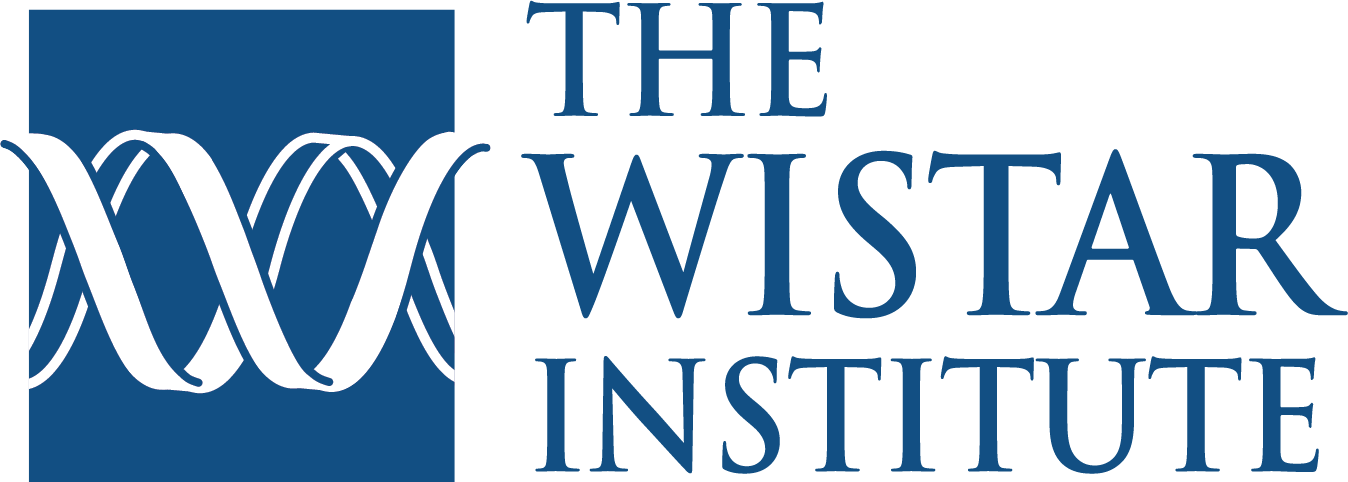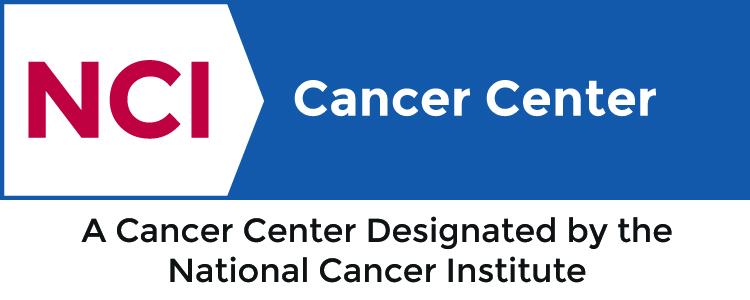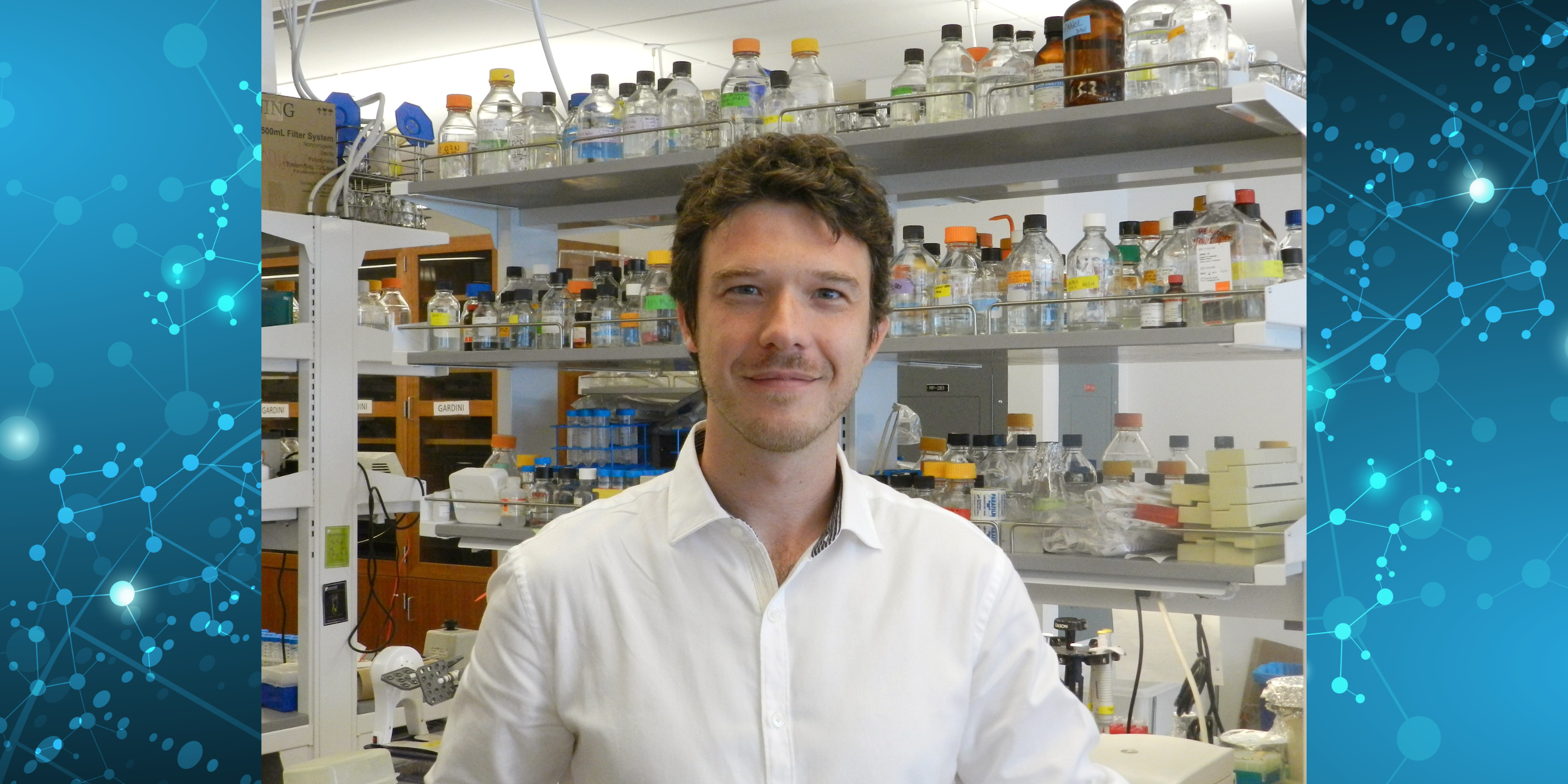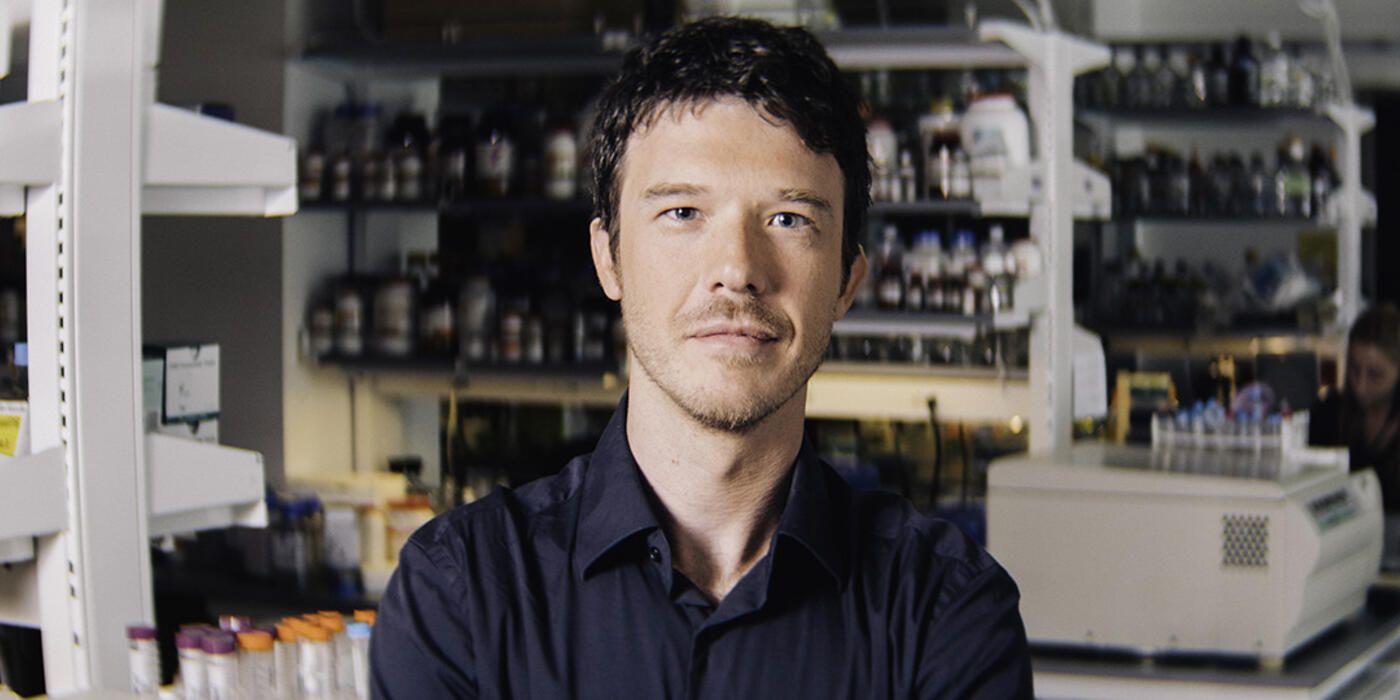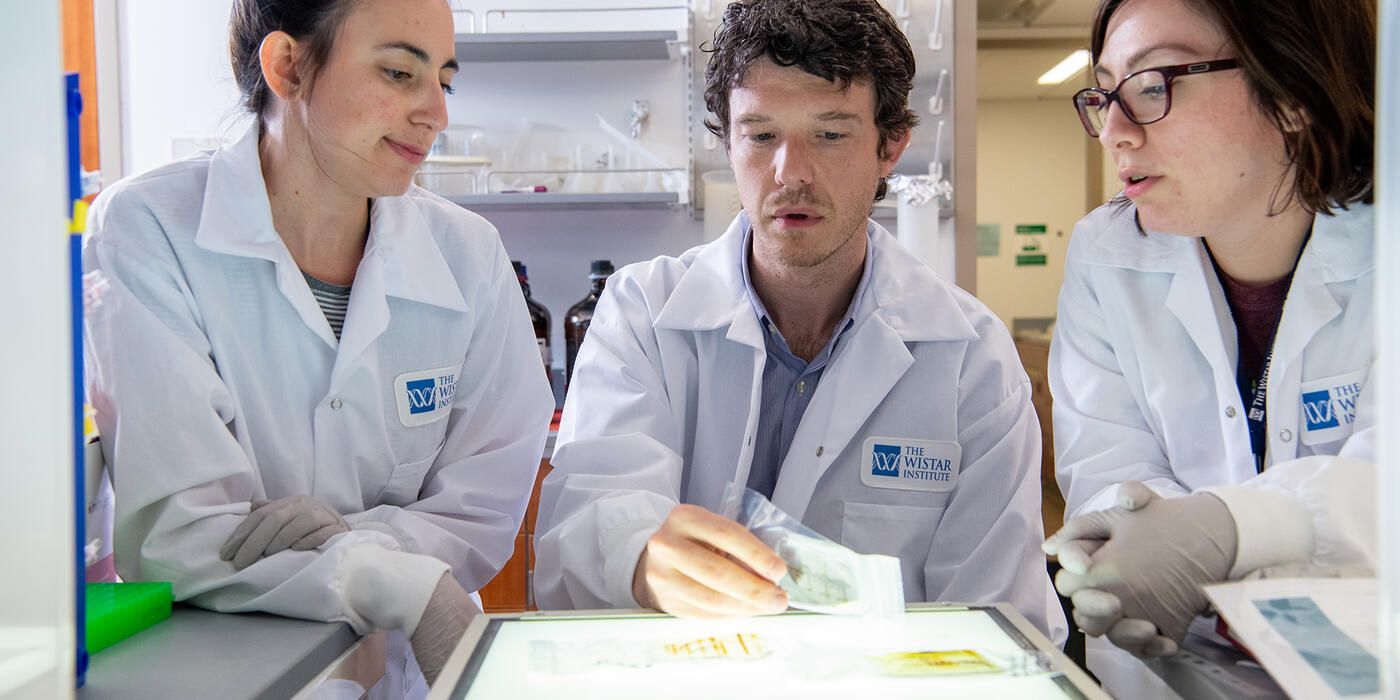Expanding the faculty and enhancing its multidisciplinary nature are focal points in Wistar’s Cancer Center under the leadership of Dario Altieri, M.D., president and CEO, director of The Wistar Institute Cancer Center, and Robert and Penny Fox Distinguished Professor.
The recent recruitment efforts, supported by partners such as The Pew Charitable Trusts, were inspired by the idea that junior investigators—in their peak of scientific productivity and creativity—are most likely to generate cutting-edge research. Therefore, attracting the most brilliant scientists and persuading them to launch their laboratory at Wistar positions the Institute ahead of a trend that is becoming increasingly popular in many research institutions.
In the span of one year from 2015 to 2016, four assistant professors joined the Cancer Center, thereby enriching and complementing existing programs with new expertise and fresh perspectives:
Qing Chen, M.D., Ph.D., came to Wistar from Memorial Sloan-Kettering Cancer Center and started her lab researching the mechanisms of brain metastasis, a very challenging subject that is in urgent need of advancement.
Alessandro Gardini, Ph.D., an ‘old acquaintance’ of Wistar’s, began his postdoctoral training in a Wistar lab and completed it at the University of Miami. He studies genomics and epigenetics, or how our genome is decoded and how malfunctioning mechanisms can cause cancer.
Kavitha Sarma, Ph.D., came from Harvard Medical School. She is a biochemist and an epigenetics expert. Her current focus is in understanding how certain RNA molecules help shape the structure of chromatin, the combination of DNA and protein that makes up chromosomes, and elucidating the role of these mechanisms in cancer and other diseases.
Zachary Schug, Ph.D., a Philadelphia native who received his postdoctoral training across the ocean at the Beatson Institute in Glasgow, U.K., returned to Philadelphia to launch his research program at Wistar in cancer metabolism, looking at the mechanisms that support the high nutrient demands of tumor growth.
Four years after arriving, and well-settled at Wistar, these four assistant professors have made
significant progress establishing research programs, publishing their first papers as senior authors, and securing solid funding through federal grants and private foundations, such as the W. W. Smith Charitable Trusts, the American Cancer Society, Susan G. Komen, the V Foundation for Cancer Research, and The G. Harold & Leila Y. Mathers Foundation.
We brought the four scientists together to take stock of their experiences at Wistar.
A diverse and stimulating scientific environment
One of the common themes in the conversation was the intellectual and scientific support junior investigators receive at the Institute. “Wistar is a small place with exceptional scientific diversity,” said Gardini.
“Exposure to different expertise in a highly collaborative environment has created plenty of opportunities for me to expand my scientific horizon and skillset,” added Schug. “For example, because of the outstanding immunology community we have at the Institute and the frequent seminars they host, my knowledge of immunology has expanded dramatically, and that was an area in which I wanted to grow.”
“I kept myself distant from immunology until I joined Wistar; it wasn’t my favorite field,” joked Chen. “But no cancer biologist can stay away from immunology these days, especially if you study the tumor microenvironment like I do. Being at Wistar made that transition easier for me.”
Pursuing their projects and expanding their interests
When asked if they stayed their course and followed their original research plan, all four scientists said they are working on the overall ideas they proposed, but they’ve added new directions they can now pursue because of the expertise and support of other labs at the Institute.
“My drug development project was difficult to get off the ground,” said Schug. “At Wistar, though, through collaboration with Dr. Salvino, I took a different approach that was successful.”
When you are a basic research scientist, finding good model systems to test your hypothesis can really make a difference. “I felt safe exploring the ovarian cancer model because there is a lot of expertise in Dr. Zhang’s lab, in particular, and I can count on resources for future developments,”added Gardini.
“Even though my primary interest is breast cancer, I received a lot of mentorship from Dr. Weeraratna,” said Chen. “She brought me into melanoma—a great model to study brain metastasis because of its tendency to invade the brain. As a matter of fact, nearly 40% of melanoma patients develop brain metastasis.”
What about academic freedom, we asked. Everyone said they were given leeway to choose their scientific direction and explore their ideas.
Sometimes, access to funding can bring about involuntary restraints to the scientists’ ability to pursue their interests. “Access to funds for basic researchers can be a challenge because most of the money is diverted to applied research,” said Sarma.
“My work is clinically relevant, so I don’t necessarily face this issue,” added Chen. “Yet, I can’t wrap my head around the scarcity of funding for basic research, as it creates the foundations for clinical development.”
“I appreciate the Institute’s strategy for grant submission because we are not pushed to apply to every possible opportunity, but they encourage us to focus our efforts where we are stronger and have a better chance of success,” said Gardini. “In the long run, it’s an efficient approach and avoids putting too much pressure on the junior faculty members.”
A little weight off their shoulders
Technological and administrative support were also highly rated and considered crucial for growth and success.
“Wistar has a reputation for its core facilities, and they absolutely lived up to my expectations,” said Gardini. “Besides the quality of their work, their efficiency and fast turnaround help getting answers fast and moving the projects forward.”
“Dario kept his promise in terms of equipment and facilities,” said Schug. “Having a metabolomics core was a necessity for the research I wanted to pursue, and he and other professors worked with me to secure funding for new state-of-the-art instrumentation. Dario has been very supportive of me setting up new techniques at the Institute.”
Administrative support is very important for junior principal investigators who are starting to navigate grants and budget, and managing multiple projects and tasks at the same time. “The support we receive from the administrative departments is exceptional, it makes our lives easier so we can focus on the science as much as possible,” said Sarma.
Beyond Wistar
Expanding beyond Wistar’s walls and into the Philadelphia life sciences hub, there was consensus that, with so many academic research institutions and hospitals, most of which are expanding, Philadelphia is the place for biomedical scientists. “I have ongoing collaborations with nearly all the major cancer centers in Philadelphia at this point,” said Schug. “It’s as easy as going across the street or taking a walk downtown.”
“If my projects lead me in a new direction that I want to explore, there is a very high chance I’ll be able to find someone around who can help,” added Gardini.
The private biotech arena is also bourgeoning in Philly. “I’m not quite there yet,” said Schug. “Though I definitely see my research expanding in that direction. We are actively engaged in drug development and testing our compounds in preclinical models with the hope that in a year from now we may begin searching for a biotech or pharmaceutical company with which to partner. Fortunately, Wistar has a fantastic business development team that supports us throughout this process.”
“I’m not exposed to biotech now, maybe in the future, if my studies identify new therapeutic targets,” said Chen.
“Alessandro and I are a little less likely to benefit from it because of the basic nature of our science and the fact that the biotech industry in Philadelphia is geared towards drug development. Naturally, it can have a bigger impact on translational scientists,” said Sarma.
A home for basic research
Bringing basic investigators on board reflects Wistar’s everlasting commitment to fundamental research and the type of breakthroughs that can come from it. In addition to expanding the universal knowledge of biological mechanisms, basic discoveries point to new therapeutic targets that can be drugged, while bringing about technological advancement.
“Genomics is a very technology-driven field,” said Sarma. “I’m excited to witness and participate in this trend and always thrilled to see new technologies emerge that will allow us to explore biological phenomena and disease in greater depth.”
“We can now look at things in ways scientists have never before, we can do genomic analysis at the single-cell level, which is mind-blowing.” added Gardini. “Obviously, this also makes our work challenging, because we need to keep up with the fast pace of technology and stay abreast of new developments and incorporate them in our research in meaningful ways.”
A look at the future
“I am very excited about the developments of my research on how diet, metabolism, microbiome, and epigenetics talk to one another in cancer,” said Schug. “Speaking of new technologies, we have been advancing new tools to study the organism as a whole and I am eager to apply this new approach to my research at Wistar.”
“I’m happy that more labs are working on brain metastasis, and I look forward to more neurobiologists entering the field,” said Chen. “Looking at things just from the cancer angle is limiting, we can move forward much faster when we know the underlying physiology.”
“Cancer genomics studies in the past decade have highlighted that many transcriptional and chromatin modulators are mutated in cancer, and for the vast majority of these we don’t know what their role is,” said Gardini. “The field is getting more and more competitive, but I’m excited that there is so much room to explore and figure out new mechanisms, and with that also come growing funding opportunities.”
“I get excited about every new discovery, big and small,” said Sarma. “Having the first piece of data and looking at it for the first time is a lot of fun, and I look forward to more of these moments. I love figuring out how things work, solving puzzles, making sense of unexpected results. That’s the best part of my job.”
The gang
Maybe it’s because they arrived within a few months of each other, or maybe it’s because they are all first-time independent investigators launching their career in academia together, and it’s certainly because they get along well—but the fab four have formed a strong bond.
“Besides collaborating scientifically, I think we’ve created a support system for each other,” said Sarma. “We interact daily and make time to connect and discuss each other’s strategies and little bumps in the road.”
“They have dragged me out of my shell, and I’m glad they did that,” said Chen. “Someone will check if they haven’t seen me for a while.”
“I’ve received a lot of help on grants applications from these guys,” said Schug. “We exchange tips and learn from each other’s experiences.”
“We root for each other’s successes and celebrate each other’s accomplishments, which is not to be taken for granted,” said Gardini. “This reflects positively on the way I feel about Wistar.”
“We don’t just talk about science, though,” said Sarma. “We discuss work-life balance, vacations, and our lives and hobbies outside the lab.”
“I’m going to say that food is probably our most typical conversation subject,” interjected Gardini, and they all acknowledged that with a laugh.
